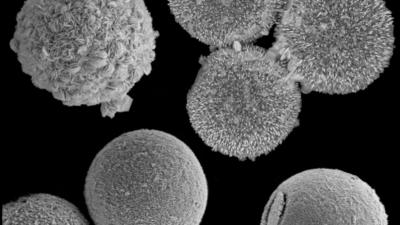Scientists from Dresden University of Technology (TU Dresden), AMOLF, Helmholtz-Zentrum Dresden Rossendorf and Johannes Gutenberg University Mainz have transformed single-cell algae into functional perovskite materials. The team, led by scientists at the B CUBE—Center for Molecular Bioengineering at TU Dresden, converted mineral shells of algae into lead halide perovskites with tunable physical properties. The new perovskites have unique nano-architectures that are said to be unachievable by conventional synthetic production.
The method can be applied to the mass production of perovskites with tunable structural and electro-optical properties from single-celled organisms.
The properties of perovskites can be tuned for specific applications by changing their chemical composition and internal architecture, including the distribution and orientation of the crystal structure. At the moment, the ability to influence these properties is massively limited by manufacturing methods. The team of scientists at TU Dresden was able to create perovskites with unique nano-architectures and crystal properties from algae, taking advantage of years of evolution of these single-celled organisms.
The team focused on L. granifera, a type of algae that uses calcite to form shells. Their spherical shells have a unique crystal architecture. The crystals are aligned radially—i.e., they spread out from the center of the sphere outwards.
"The current manufacturing methods of perovskites are not able to produce materials like this synthetically. We can however try to transform the existing natural structures into functional materials while keeping their original architecture", said Dr. Igor Zlotnikov, corresponding author.
To transform the natural mineral shells of algae into functional perovskites, the team substituted chemical elements in calcite. To do that, they adapted a method developed by their collaborators at AMOLF institute in Amsterdam. During the transformation, scientists were able to produce different types of crystal architectures by altering the chemical makeup of the material. In that way, they could fine-tune their electro-optical properties.
By converting the calcite shells to lead halides with either iodine, bromide, or chloride, the team could create functional perovskites that are optimized to emit only red, green, or blue light.
"We show for the first time that minerals produced by single-cell organisms can be transformed into technologically relevant functional materials. Instead of competing with nature, we can take advantage of the years of evolutionary adaptation they already went through", commented Dr. Zlotnikov.
The method developed by the team can be scaled up, opening up the possibility for the industry to take advantage of algae and numerous other calcite-forming single-celled organisms to produce functional materials with unique shapes and crystallographic properties.




